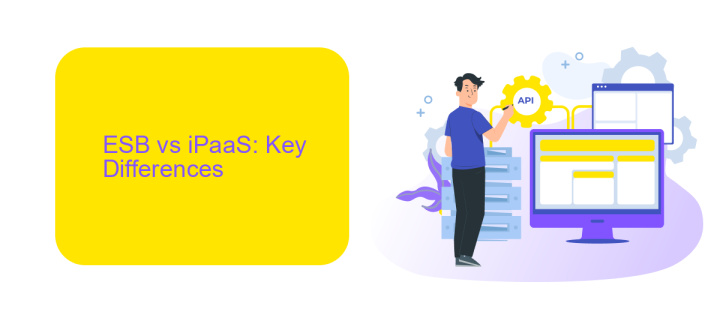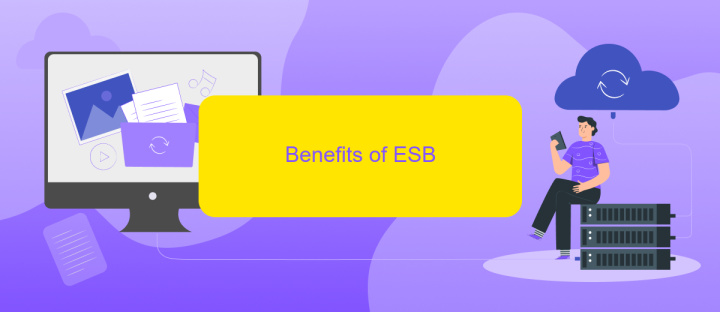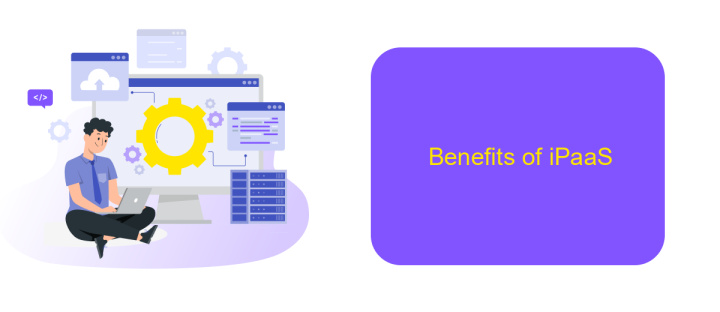ESB vs iPaaS
In the evolving landscape of enterprise integration, businesses are often faced with the choice between Enterprise Service Bus (ESB) and Integration Platform as a Service (iPaaS). This article explores the key differences, strengths, and use cases of both ESB and iPaaS, helping organizations make informed decisions on which solution best meets their integration needs and strategic goals.
Introduction
In today's fast-paced digital landscape, businesses are increasingly relying on integration solutions to streamline their operations and enhance efficiency. Two prominent approaches for achieving this are Enterprise Service Bus (ESB) and Integration Platform as a Service (iPaaS). Both technologies aim to facilitate seamless communication between disparate systems, but they differ significantly in their architecture, deployment, and use cases.
- Enterprise Service Bus (ESB): A centralized architecture that acts as a middleware, enabling communication between various applications within an enterprise.
- Integration Platform as a Service (iPaaS): A cloud-based solution that provides tools for integrating applications and data across different environments, both on-premises and in the cloud.
Understanding the distinctions between ESB and iPaaS is crucial for businesses aiming to choose the right integration strategy. While ESB is often favored for its robust, on-premises capabilities, iPaaS offers flexibility and scalability, making it ideal for modern, cloud-centric enterprises. Services like ApiX-Drive further simplify the integration process by providing user-friendly, automated solutions tailored to diverse business needs.
ESB vs iPaaS: Key Differences

Enterprise Service Bus (ESB) and Integration Platform as a Service (iPaaS) are both integration solutions, but they differ significantly in their architecture and use cases. ESB is an on-premises middleware that facilitates communication between different applications and services within an enterprise. It acts as a centralized hub, managing data transformation, routing, and protocol conversion. ESB is ideal for organizations with complex, large-scale systems that require robust, real-time integration capabilities.
On the other hand, iPaaS is a cloud-based solution designed to connect various cloud and on-premises applications quickly and easily. iPaaS platforms, like ApiX-Drive, provide user-friendly interfaces and pre-built connectors, enabling businesses to set up integrations without extensive coding knowledge. This makes iPaaS suitable for companies looking for agility, scalability, and ease of use in integrating their applications. While ESB focuses on deep, enterprise-level integration, iPaaS caters to the growing need for rapid and flexible integration in a cloud-centric world.
Benefits of ESB

Enterprise Service Bus (ESB) offers numerous advantages for organizations seeking to streamline their integration processes. By facilitating communication between disparate systems, ESB ensures seamless data exchange and interoperability, which is crucial for maintaining operational efficiency.
- Scalability: ESB allows for the easy addition of new services and applications without disrupting existing workflows.
- Flexibility: It supports various communication protocols and data formats, making it adaptable to different IT environments.
- Centralized Management: ESB provides a single point of control, simplifying monitoring and management tasks.
- Cost-Effectiveness: By reducing the need for custom point-to-point integrations, ESB lowers development and maintenance costs.
- Enhanced Security: ESB offers robust security features, including authentication, authorization, and encryption, to protect sensitive data.
For organizations looking for a more user-friendly approach to integration, services like ApiX-Drive can be an excellent complement to ESB. ApiX-Drive simplifies the setup of integrations with its intuitive interface, making it easier for non-technical users to connect various applications and automate workflows.
Benefits of iPaaS

Integration Platform as a Service (iPaaS) offers a range of benefits for businesses looking to streamline their operations and enhance connectivity between various applications. One of the primary advantages of iPaaS is its ability to simplify complex integration processes, allowing companies to connect disparate systems with minimal effort.
Another significant benefit is the scalability that iPaaS platforms provide. As businesses grow, their integration needs become more complex. iPaaS solutions can easily scale to accommodate increased data volume and additional applications, ensuring seamless operations.
- Cost-effective integration without the need for extensive IT infrastructure.
- Enhanced data synchronization and real-time updates.
- User-friendly interfaces that reduce the learning curve for non-technical users.
- Pre-built connectors and templates for quick deployment.
Services like ApiX-Drive exemplify the benefits of iPaaS by offering easy-to-use tools for automating integrations. With ApiX-Drive, businesses can connect a wide variety of applications and automate workflows, saving time and reducing the risk of errors. This makes iPaaS an invaluable asset for modern enterprises aiming to maintain agility and efficiency.
Choosing the Right Solution
Choosing between an ESB (Enterprise Service Bus) and an iPaaS (Integration Platform as a Service) largely depends on your organization's specific needs and existing infrastructure. ESBs are typically best suited for large enterprises with complex, on-premises systems that require robust and centralized control over data flows and integrations. They offer extensive customization and are ideal for scenarios where security, compliance, and control are paramount. However, they often come with higher implementation and maintenance costs.
On the other hand, iPaaS solutions like ApiX-Drive are designed for businesses looking for a more flexible, cloud-based approach to integration. iPaaS platforms are generally easier to implement and manage, offering a user-friendly interface and pre-built connectors for various applications and services. They are ideal for organizations that need to quickly integrate multiple cloud services without extensive coding or infrastructure changes. When deciding, consider your organization's size, budget, and integration complexity to choose the most suitable solution.
FAQ
What is the primary difference between ESB and iPaaS?
Which is more suitable for a cloud-first strategy, ESB or iPaaS?
Can ESB and iPaaS be used together?
What are the key benefits of using iPaaS over ESB?
How do I choose between ESB and iPaaS for my organization?
Routine tasks take a lot of time from employees? Do they burn out, do not have enough working day for the main duties and important things? Do you understand that the only way out of this situation in modern realities is automation? Try Apix-Drive for free and make sure that the online connector in 5 minutes of setting up integration will remove a significant part of the routine from your life and free up time for you and your employees.

